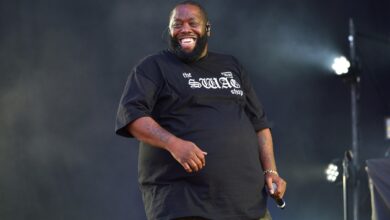Census shows Black population growing slightly in Utah

SALT LAKE CITY (AP) — Growing up in Ogden, Jasmine Gordon counted the number of other African American families whose children attended her elementary school on a single hand.
Now a business owner and a Salt Lake City resident of more than a decade, she has observed part of a small but consistent demographic trend in the Beehive State. Gordon, 33, said she no longer recognizes each Black neighbor she happens to come across, and has watched closely as the capital city’s business community has diversified.
“I love some of the things I’m seeing right now,” Gordon said Wednesday as she awaited an appointment with a client at A La Mode, a downtown boutique she co-owns with her sister, Angelique Gordon. She noted a coalition of local businesses is now raising money to support Black Lives Matter and the Utah Black Chamber in the wake of George Floyd’s killing in Minnesota.
Although just 1% of Utah’s overall population, Utah’s African American community grew the most of any minority group last year, show census figures released late Wednesday.
Gordon, who has dealt with racism from as early as she can remember, said she’s hopeful the change reflects an increase in Black teachers, coaches and other role models for the next generation of African Americans in Utah.
The 4.7% increase — to a total of about 38,000 — is one chapter in a larger story of demographic change in Utah, now home to more than 3.2 million.
Just over 22% of Utah residents are ethnic or racial minorities, most of them Hispanic. While those older than 65 are overwhelmingly white, younger Utah residents are more ethnically and racially diverse.
“Each year just seems like little, tiny changes, but when you’ve got a full decade to look at, you can see how these little incremental changes really do accumulate to bring us an older, more diverse population — and how the youth are much more diverse, racially, ethnically and linguistically than the elders,” said Pamela Perlich, director of demographic research at the Kem C. Gardner Policy Institute. “It’s just this wave of diversity that’s sweeping across the nation.”
Perlich analyzed the numbers, the final set of population estimates to rely on the 2010 census, and shared her insights with the Deseret News.
She points out that in the larger time frame of the past decade, Utah residents of Asian heritage swelled the most of any demographic group — 49% — up to a total of more than 81,000. The newcomers include those from other states, overseas and babies born in Utah.
The diversity within the Asian community is vast, said Rep. Karen Kwan, Utah’s first Chinese-American lawmaker. Many in the group are coming from California and seeking more affordable housing, she said, while others are flying from overseas to be close to family in the Beehive State. Still more have arrived to work in the tech sector or other industries.
“I see it as a widening of Utah’s culture,” Kwan, D-Murray, said.
But the demographic news comes as minorities fall sick with the coronavirus at greater rates and as Asian American communities have faced more discrimination amid the pandemic that President Donald Trump has repeatedly called the “kung flu.”
“On a personal note, I’m very wary when I leave the house,” Kwan said. “Am I going to get accosted? Will my kids be accosted? That, of course, is not anything new, but it’s a growing, increasing fear.”
The rapid growth in the Asian community was trailed by that of multiracial Utah residents, who saw a surge of 47.2% in the last decade, followed by Black Utah residents at 44.5%.
























































